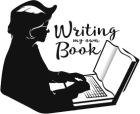Quotation marks are used for more than dialog. They can also be used for emphasis. These interesting quotation mark rules will help you punctuate your work for better readability and impact.
Quotation Marks for Emphasis
Whenever you want to emphasize something, use single quotes. While double quotes are acceptable, single quotes increase readability.
I’ve gone through and tried to fix as many ‘ing’ endings as I could.
You can control the ‘Created Date’ which then controls its position in the News list.
American Vs. British/Canadian/Australian Quotation Rules
The land of the free and the brave insists that all quotes fall outside commas and periods. The rest of English-speaking world differs. Personally, I prefer the control over my message which the British rules give me. Alas, I edit primarily for American publications.
If you are publishing your work outside the United States, follow these rules.
1. If you are quoting a person, the closing quote falls after the punctuation mark.
2. If you are adding emphasis or quoting indirectly, the closing quote mark falls before the punctuation.
He said, “Your oil change is done.” (Rule #1)
That oil change sure turned into a ‘surprise‘. (Rule #2)
Do you believe that “the end justifies the means“? (Rule #2)
Consistent Quotation Mark Rules
Never use more than one punctuation mark to end a sentence. So even though it looks like you should have a period after means, in the last sentence above, you drop it in this case.
- One question mark or exclamation point replaces a period and question mark/exclamation point combination.
- An exclamation marks trumps a question mark if you must emphasize the question. No “What in tarnation!?” allowed if you want to look like a professional.

